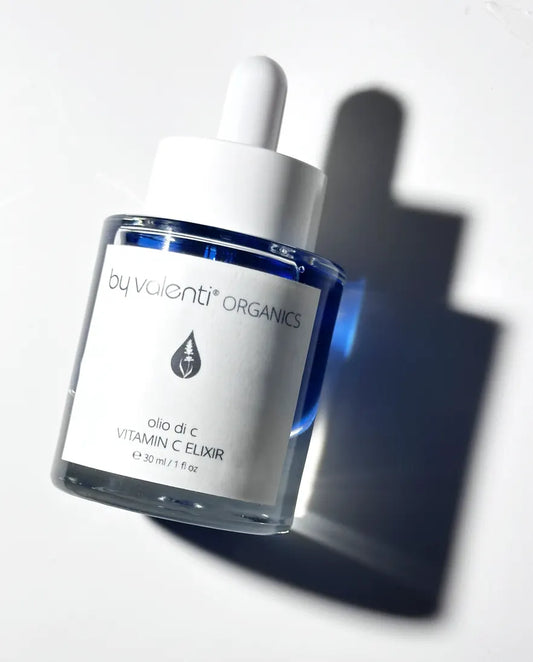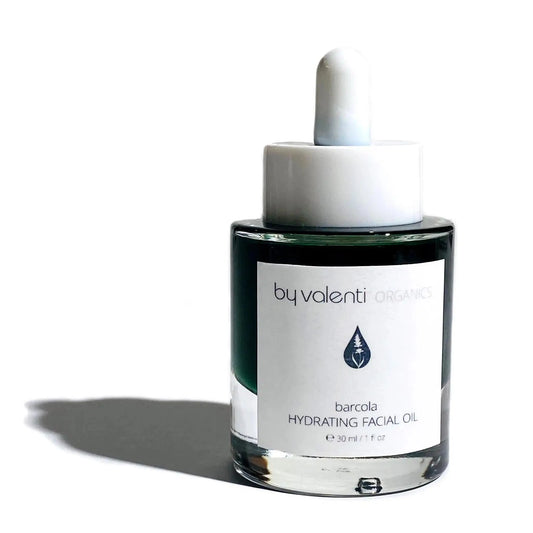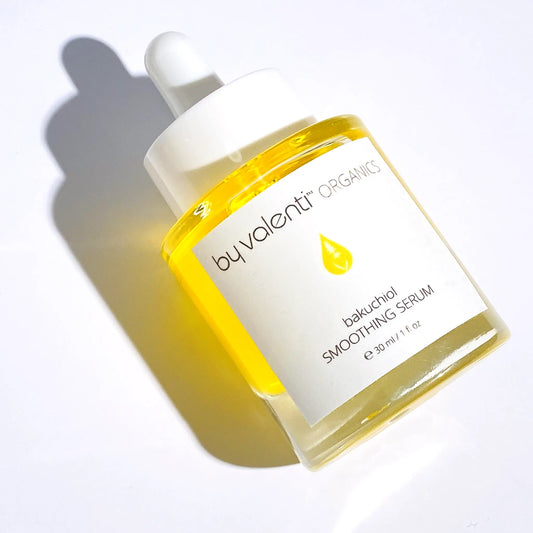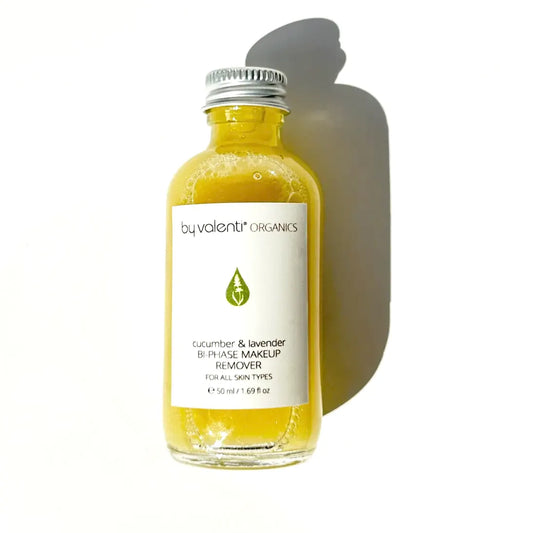Skincare Myth: Your skin absorbs everything you put on it
Manuela ValentiShare
And it doesn't matter how many times we try to dismantle it, it keeps coming back! But when it's shared by doctors turned skincare professionals who apparently forgot bio 101, it's just plain unforgivable.
The fact of the matter is, that statement is not true, or as we would say in 2022, fake news. (Do we still say that?)
Permeability of the skin
The skin, the largest organ in the human body, serves as a barrier, and it does an amazing job at it. It keeps your insides — muscles, veins, tendons, bones, organs and everything else — from spilling out, as well as keeping most of what surrounds us from getting in, including water, soil, dust, germs, viruses, bacteria and more. If that wasn't the case, we would become shampoo, soap and water balloons after every shower we took. That's a funny visualization isn't it?
Skin absorbs UP TO 60% of what you put on it IF and ONLY IF small enough to penetrate all the layers of the skin.
This UP TO 60% is a ballpark, not an exact measure, a very inflated and non-precise estimate if you will, because for whatever reason people need to have a number tied to everything.
But this non-precise inflated number is dependent on many factors including but not limited to, what it is that our skin comes in contact with, in what concentrations, the age of the individual, their weight, pH of the chemical, what part of the body the chemical comes in contact with — as not all our skin has the same absorption ability —, the temperature of the body and the temperature of the compound at the moment of contact, the overall health of the person, the physical health of the skin, and the size of the molecules, among many other factors.
The thickness of the skin, the number of cell layers, cell size of the epidermis and the stratum corneum, and the distribution of hair follicles affect skin permeability greatly. As a rule of thumb, the thinner the skin, the higher its absorption rate.

By Normal_Epidermis_and_Dermis_with_Intradermal_Nevus_10x.JPG: KilbadCropped and labeled by Fama Clamosa (talk) and Mikael Häggström, respectively - Normal_Epidermis_and_Dermis_with_Intradermal_Nevus_10x.JPG (Public Domain)Scale at lower left was created from the an estimation of mean epidermal cell nuclei of 8.6 μm according to the following study:(2011). "Automated identification of epidermal keratinocytes in reflectance confocal microscopy". Journal of Biomedical Optics 16 (3): 030502. DOI:10.1117/1.3552639. ISSN 10833668., Public Domain, https://commons.wikimedia.org/w/index.php?curid=10759481

By Mikael Häggström, based on work by Wbensmith - File:WVSOM Meissner's corpuslce.JPG by Wbensmith.Layers were drawn according to image at Home Page of Deborah S. Dempsey, Department of Biological Sciences Northern Kentucky University > V. SKIN > 2 LAYERS ([1]), CC BY-SA 3.0, https://commons.wikimedia.org/w/index.php?curid=10759398
The reason this 60% number isn't an exact measurement is because not absolutely everything permeates our skin, and not everything that permeates the skin does it at the same rate, the same amount or penetrates completely all the layers of our skin to reach our bloodstream, lymphs and organs.
If 60% was an exact measurement, then imagine the size your body would become just by swimming in a pool or the ocean. 60% of the water in that pool or beach would be inside you in no time. Instant human water balloons. Yet that never in the history of ever has happened.
Water for example cannot penetrate the skin from the outside in. This is because the skin is good at what it does, and because the stratified squamous epithelium a.k.a. stratum corneum, is keratinized, making it impermeable and waterproof. Water will get into the cells of the outer layer of the epidermis, the stratum corneum, swelling them up, but won't go in any further, which is why sitting in a pool of water for a while will get you looking all wrinkled up like a prune.
Our skin is permeable up to a point, or impermeable up to a point, however you want to see it. (1, 2)
Some chemicals do make it through without a problem, while some others do not, and there is a basic reason why, the size of their molecules.
Size Matters. But not Always.
Let me introduce you to the 500 Dalton rule. The 500 Dalton rule states for a substance to be able to cross the skin barrier, it must have a molecular weight of fewer than 500 Dalton. Most allergens, are smaller than 500 Dalton. BUT size is not the only factor for dermal penetration. (3)
Water for example, has a molecular weight of 18.01528 g/mol = 18.01528 Dalton. Glycerin on the other hand has a molecular weight of 92.09 Dalton. In theory according to that rule water and glycerin should be able to pass through the skin just fine, and yet they don't. That's because, as I've mentioned above, the skin on top is impermeable and waterproof. However the chemicals in those substances could potentially make it through while leaving everything else out.
Depending on the size of the molecules, pH, polarity, and a load of other factors, certain substances will sit atop the skin, within the outer layer of the skin, or permeate all the way through in some instances almost intact and unchanged.
In cosmetics in particular most ingredients cannot penetrate the skin, simply because their molecular sizes are too large or their polarity is not correct. Some active ingredients designed to be transported into the skin or absorbed by the skin, are either incorporated into the skin's connective tissue, where they do their magic as we say, or are metabolized a.k.a. broken down by our skin and body. What is needed remaining in the layers of the skin, and the excess going into the bloodstream and discarded by the organs in charge of removing toxins from our body (kidneys, liver, and colon - no, your skin and your lymphatic system are not detox organs).
Unfortunately not all ingredients do that, and that's where cosmetic chemists must be very careful. Cosmetic chemists, for the most part, avoid unintentional dermal penetration of active ingredients at all cost. At least most of us do. In a desperate race to achieve the so elusive perpetually youthful appearance, some formulators forget our scope is to improve the appearance of the skin without damaging or affecting it negatively. Small enough particles, called nanoparticles will go through the layers of the skin with barely any effort, assuming they're smaller than 500 Dalton. When the ingredient has being studied enough to prove efficacy and that it does not poses any damaging side effects to the human body, the ingredient becomes a phenomenon in skincare. However not all ingredients go through the same rigorous process and many fall through the cracks, so to speak.
Of the many ingredients in cosmetics in vogue in recent years, colloidal precious and semi-precious metals, such as gold, silver, titanium and the like, with quite bogus, narrow and unscientific (pseudo scientific) claims, are being used in cosmetics preparations, even against current regulations at levels not safe for regular or daily use. These powdery metals, taunted as the next best thing in cosmetics, penetrate the skin without any effort remaining completely unchanged, and that's a problem.
Proponents of these precious and semi-precious metals in skincare are focusing solely on the benefits these metals allegedly pose to the skin, and I say allegedly because the results are not conclusive, without taking into consideration the possible negative side effects.
Because the human body has absolutely no use for these metals, opposite to iron and copper for example, which the body needs in relatively very small quantities to properly function, silver, gold and titanium have the potential for being detrimental to our overall health and well-being, as discussed in quite numerous studies conducted in vivo and in vitro.
Just because it shines doesn't mean it's good for you.
If you don't fancy a smurf like silvery blue skin color with lots of health issues as side effects, you may want to stir away from cosmetics containing colloidal silver. If you don't want to potentially suffer from kidney, liver, intestine and spleen damage, you may want to avoid cosmetics with colloidal gold instead. (4, 5)
It's a good practice to be aware of what we put on our skin, just as much as what we eat, drink and breathe. Knowing what ingredients to look out for, their benefits or possible negative effects, and which ones we should completely avoid is important for our overall well-being. But assuming everything we rub on our skin will be absorbed is not a reality, but a baseless myth created just for marketing purposes, particularly in the "natural skincare industry".
Awareness shouldn't be translated into fearmongering, but conscious knowledge so we can ALL make informed decisions.
References
1 - Research into skin that holds water - https://www.fau.eu/2014/02/13/news/research-into-skin-that-holds-water/,
2 - Epidermis - https://courses.lumenlearning.com/wm-biology2/chapter/epidermis/,
3 -
5 - Gold nanoparticles: Distribution, bio-accumulation and toxicity. In vitro and in vivo studies - https://www.sciencedirect.com/science/article/abs/pii/S1549963417301582


































